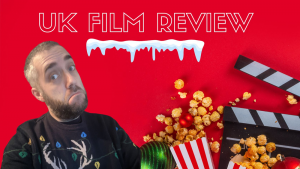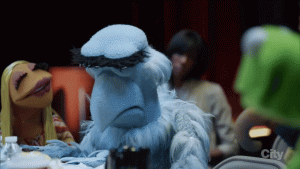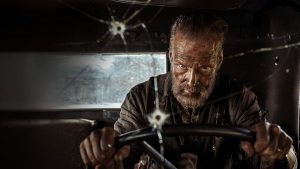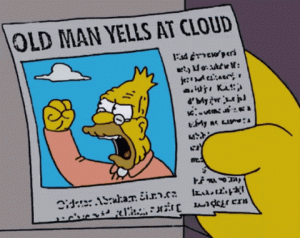
The post Endangered Species: Reassessing Congo, by Tyler Smith appeared first on Battleship Pretension.
One of the most rewarding endeavors in the world of film criticism and academia is that of reassessment. That is, to look deeper into a movie from a distance and with the benefit of hindsight. In doing this, it allows the critic to dismiss all of the superfluous elements surrounding a movie at the time of its release. Marketing, critical consensus, box office; while these are impossible to ignore, they do tend to fall away on their own as the years go by, leaving only the movie itself, free of baggage and ready to be seen from a fresh perspective. Suddenly, culturally relevant movies become less vital. Award winning films are rendered little more than the answer to a trivia question. And movies universally regarded as bad can be appreciated for their charms. One film that falls firmly into the latter camp is Frank Marshall’s Congo.
Based on the novel by Jurassic Park author Michael Crichton, Congo was marketed as another man vs. nature thriller, with our characters squaring off against savage killer gorillas. Undoubtedly, audiences went into the theater expecting another Jurassic Park, and were thus disappointed when it was anything but. What they got instead was a group of scientists meandering through the jungle, only encountering the gorillas in the third act. Viewers and critics alike dismissed the movie as a corny failure and it was summarily forgotten.
Were the film trying to emulate Jurassic Park, I would agree that it is a horrible failure. But, the fact is, I don’t think the film is trying to do that. Instead, rather than a sci-fi creature feature, Congo feels much more like a 1930s adventure movie. The film is less interested in being like Alien or Jaws than in conjuring the images and tone of films like King Kong and The Most Dangerous Game. It is about high adventure in an exotic location, with all manner of threat waiting around the next corner. Certainly, the killer apes show up for the climax, but only after our heroes jump out of a plane, encounter a lost tribe, discover ancient ruins, raft down dangerous rapids, and are attacked by hippos. And all this after navigating a militaristic government in the midst of a revolution. These sequences are not just a prelude to the main event; they are the event. This is a film every bit as much about the journey as the destination. And it all ends in a narrow hot air balloon escape from an erupting volcano.
That the film is directed by Frank Marshall, one of the producers of the Indiana Jones films of the 1980s, is itself a pretty clear indicator of how we are meant to approach it. Everything about it is a throwback to a different era of filmmaking. Not just the story and setting, but the characters as well. Laura Linney’s no-nonsense ex-CIA agent butts heads with Dylan Walsh’s nebbish scientist in a way that evokes the lighter romances of the 1930s. Tim Curry’s over-the-top portrayal of a shady Romanian philanthropist owes a lot to the campier performances of Peter Lorre and Charles Laughton. And perhaps best capturing the devil-may-care tone of these adventure films is Ernie Hudson, who relishes every line with a wink and a smile. These are not the types of characters you would find in your more straightforward horror/thrillers. They are another tool that Marshall uses to recreate a bygone film era, just like the production design, art direction, and Jerry Goldsmith’s primal musical score.
Given Frank Marshall’s intentions for the film, it was perhaps inevitable that it would fail. Even if the marketing had succeeded in conveying the true nature of the film, I doubt many people would have been eager to see it. It was released in the 1990s, a time when cutting edge technology, both in front of and behind the camera, was becoming as vital a part of cinema as the screenplay and acting. With films like Terminator 2, Independence Day, and eventually The Matrix dominating the box office, a throwback adventure featuring guys in gorilla suits on a soundstage didn’t hold much appeal. And maybe, after two decades of nostalgic filmmaking from the likes of Francis Ford Coppola, George Lucas, Barry Levinson, Roman Polanski, Peter Bogdanovich, and Steven Spielberg, film critics were ready to start looking forward instead of backwards. For whatever the reason, audiences and critics alike were more than happy to toss this film aside and immediately forget about it.
I, on the other hand, have not forgotten about it. In fact, I’ve been defending it for almost 30 years. Even when I first saw it in theaters, and had no understanding of what the director was trying to do, it still hit me on a deeper level. While my friends complained that it was not Jurassic Park, I seemed to instinctively know, but was unable to verbalize, that it was never trying to be. Now, after decades of watching, reviewing, and teaching, I’m finally able to appreciate the risk that Frank Marshall was taking with this film. In many ways, Congo was doomed from the start. Thankfully, however, we are no longer at the start. We can see the film for what it is, rather than what we thought it was trying to be. And what it is is an enjoyable, campy, old-school adventure film; a loving homage to the types of movies that helped Hollywood become the powerhouse that it is. It is a film that definitely deserves a second look. And a third. And maybe even a fourth…
The post Endangered Species: Reassessing Congo, by Tyler Smith first appeared on Battleship Pretension.
The post Endangered Species: Reassessing Congo, by Tyler Smith appeared first on Battleship Pretension.




